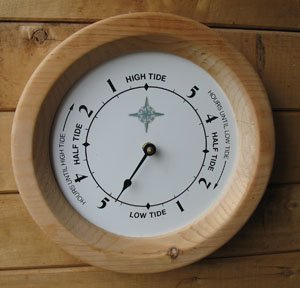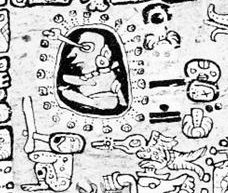6. The total number of glyphs on the G tablet was determined to be 471 because we should count also the empty (zero) glyph space at the beginning of side a, at Hyadum II, at MARCH 21 (80 = 0h), and then the number will be 472 = 8 * 59 (= the number of nights in 16 synodic lunar months). ... The length of a month measured from one Full Moon to the next is approximately 29½ nights, and 59 nights corresponded to a pair of such synodic months. It was convenient to count months in pairs to avoid the fraction ½ ... 
471 = 314 * 1½ and everyone knew how to use of the remarkable number π. We can see from the design of Gb8-24 how the creator of the text with a very special glyph here documented MARCH 14 (3-14) as an allusion to π. This was glyph number 465 (= 5 * 73 + 100 = 6 * 73 + 27) in his text, and 8 * 24 = 192 = 272 (i.e. 2 * 136) - 80 (0h). But the basic structure amounted to twice 236 (= 8 * 29½) nights:
The figure in Gb1-6 is standing on his feet, but the string figure in the following day has his head pointing downwards - it was as when all the sand in an hour glass had run down and the glass had to be turned upside down. ... There are 471 glyphs on the tablet and each glyph represents a day. But the first day in the text is not represented by a glyph, because time flows and the first day cannot be incised in the wooden tablet before all its 24 hours have been measured out in full. It is like the signs for the hours on the face of an old-fashioned clock:
The number of right ascension hours was not 12 but twice that number, for 314 had to be counted 2 times the distance from the center of the circle to its perimeter (its radius). The Moon produced the tides. She pushed the ocean high and then she restored the sands on to the beach, and this cycle came twice in a day, a phenomenon equally well known as the single diurnal cycle of the Sun.
The rongorongo tablets could therefore have been inscribed with text on both sides in order to (re)present a long Moon double-cycle. ... There is a couple residing in one place named Kui and Fakataka [meaning Creating a Cycle]. After the couple stay together for a while Fakataka is pregnant. So they go away because they wish to go to another place - they go. The canoe goes and goes, the wind roars, the sea churns, the canoe sinks. Kui expires while Fakataka swims. Fakataka swims and swims, reaching another land. She goes there and stays on the upraised reef in the freshwater pools on the reef, and there delivers her child, a boy child. She gives him the name Taetagaloa [meaning Not Tagaroa]. When the baby is born a golden plover flies over and alights upon the reef. (Kua fanau lā te pepe kae lele mai te tuli oi tū mai i te papa). And so the woman thus names various parts of the child beginning with the name 'the plover' (tuli): neck (tuliulu), elbow (tulilima), knee (tulivae) ...
However, 1½ * 314 glyphs on the G tablet could mean an attempt to 'synchronize' the time cycles of the Moon (2) with that of the Sun (1). I have used right ascension days instead of right ascension hours because it was convenient. The 24 right ascension hours (lines of 'longitude') are primarily lines for finding stars at a certain time in the night, but by changing to right ascension days I suggest the rongorongo texts were primarily created for finding stars in a certain night of the year.
|
||||||||||||||||||||||||||||||||||||||||||||||||||||||||||||











